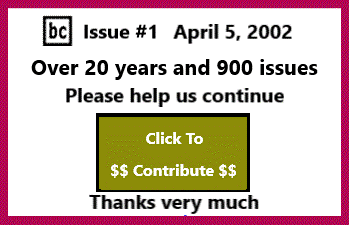Why?
“What they’re doing always comes down to profits,”
says
Zack Nestel-Patt,
an organizer with the Union
of Musicians and Allied Workers
(UMAW).
And Spotify sees Rogan as more profitable than even the entire
catalogs of legendary musicians.
Spotify’s
model isn’t the end of the world for Young, Arie, or other
major artists who can rely on competitors like Apple Music. But the
millions of “working-class musicians struggling at the bottom
of the Spotify ecosystem,” as Nestel-Patt describes them, have
no such leverage.
The
company’s business model, to put it simply, is built on the
severely underpaid labor of millions of creators.
Say
an independent musician spends years putting their heart and soul
into their craft. Finally, they score a hit that garners millions of
plays on Spotify. You might imagine this translates into a generous
payout.
But
in reality, Spotify’s paychecks are peanuts. One analyst
estimated
that
band members with families would need more than 24 million plays on
Spotify per year to just barely clear the federal poverty line.
Even
those minuscule royalties may need to be split with a record label,
collaborators, songwriters, managers, and more. The money that most
of Nestel-Patt’s musician friends earn from Spotify is “so
negligible that they don’t even account for it.”
In
short, Spotify sells products that creators get almost no money to
produce. It’s akin to theft. “Imagine any other business
working that way,” says Nestel-Patt.

There
was a time when musicians made money from selling records, cassettes,
and CDs — sales that were fueled by their songs being played on
radio. That started changing in the late 1990s
when
digital platforms began offering music for little to nothing, paving
the way for Spotify.
That
digital transition forced musicians to rely on live performances and
ticket sales to earn a living. But in 2020, when a global pandemic
brought the world to a standstill, live performances abruptly
stopped. “It was catastrophic for everyone I know,”
recalls Nestel-Patt.
Now
though, musicians are fighting back. From the ashes of musical
careers rose the UMAW, where artists proclaimed
that
“music workers are workers, and it is time we get organized and
join the fight.”
The
group, which also supports universal health care, a Green New Deal,
and more, led multi-city
protests
against
Spotify in 2021. And tens of thousands of musicians signed a petition
as part of UMAW’s #JusticeAtSpotify
campaign.
Their
demands
were
simple: Pay artists fairly, directly, and transparently, and treat
them with dignity.
With
Americans spending
increasingly more
money
on music, there should be more than enough to go around. But even as
industry revenues have risen to $43 billion a year, very little goes
to musicians. Creators get only about 12 percent, with corporate
middlemen sucking up a majority of the profits.
It’s
not just musicians who lose out. Music itself suffers.
In
a recent Atlantic
headline,
music historian Ted Gioia asked: “Is
Old Music Killing New Music?”
Record
labels, he observes, are “losing interest in new music.”
While there’s plenty of incredible new musicians, he writes,
the industry “has lost its ability to discover and nurture
their talents.” And Spotify is a big reason why.
“This
is as much a listener issue as it is a musicians’ issue,”
argues Nestel-Patt. If Spotify relies on major pop acts or
controversial podcasts for revenue, then “what happens to
classical music? What happens to Tejano music? What happens to
Appalachian bluegrass music?”
The
ultimate losers here aren’t just those who make music. It’s
all of us who love it.
This
article was produced by Economy
for All,
a project of the Independent Media Institute.

